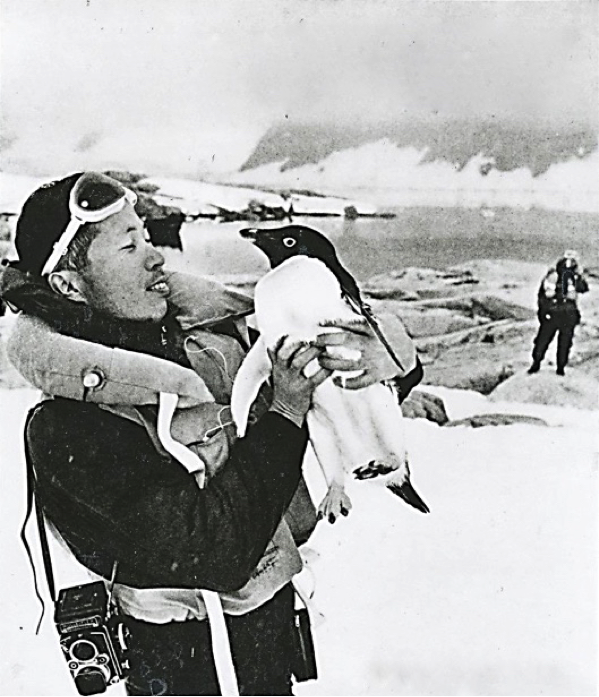Antarctica History.
Antarctica’s history dates back to its discovery in 1820 by explorers Fabian Gottlieb von Bellingshausen and Mikhail Lazarev. The continent has since been a focus of scientific research and international treaties.
Antarctica, the southernmost continent, is a land of extremes. It is the coldest, driest, and windiest place on Earth. Early explorers faced treacherous conditions to chart its icy expanse. Unlike other continents, Antarctica has no native population. Its unique environment preserves a pristine landscape, largely untouched by human activity.
The Antarctic Treaty, signed in 1959, ensures that the continent remains dedicated to peaceful scientific exploration. Researchers from around the globe study its climate, wildlife, and geology. This frozen wilderness offers invaluable insights into our planet’s past, present, and future.

Credit: www.antarcticacruises.com
Early Explorations
Antarctica, the frozen continent at the southernmost point of Earth, has a rich history of exploration. Early explorers braved extreme conditions to discover its mysteries. These expeditions paved the way for scientific research and understanding.
Ancient Theories
Before anyone saw Antarctica, there were ancient theories about a southern land. The Greeks called it Terra Australis Incognita, meaning the unknown southern land. They believed a large landmass balanced the northern continents. These ideas persisted through the ages.
In the Middle Ages, maps showed this mysterious land. No one knew if it existed. Theories fueled the curiosity of explorers. They wanted to find this hidden world. Scholars and adventurers alike dreamed of uncovering it.
First Sightings
The first confirmed sightings of Antarctica happened in the early 19th century. In 1820, three ships reported seeing the icy coastline. These ships were captained by Fabian Gottlieb von Bellingshausen, Edward Bransfield, and Nathaniel Palmer.
Bellingshausen, a Russian explorer, saw an ice shelf on January 27, 1820. Just days later, Bransfield, an English sailor, spotted the northern tip of the Antarctic Peninsula. In November of the same year, Palmer, an American sealer, sighted the mainland.
These sightings confirmed that a vast, frozen continent existed. The age-old mysteries of Terra Australis Incognita began to unravel. Explorers now had a new goal: to uncover Antarctica’s secrets.
| Explorer | Nationality | Date of Sightings |
|---|---|---|
| Fabian Gottlieb von Bellingshausen | Russian | January 27, 1820 |
| Edward Bransfield | English | January 30, 1820 |
| Nathaniel Palmer | American | November 17, 1820 |
The early explorations of Antarctica were filled with danger and discovery. Brave explorers navigated treacherous waters and icy landscapes. Their journeys laid the groundwork for future expeditions and scientific research. Each sighting brought us closer to understanding this frozen frontier.
Heroic Age
The Heroic Age of Antarctic Exploration lasted from the late 19th century to the early 20th century. This era saw numerous daring expeditions and incredible feats of bravery. Explorers ventured into the icy wilderness, often risking their lives.
Pioneering Expeditions
The Heroic Age began with the Belgian Antarctic Expedition in 1897. Led by Adrien de Gerlache, it was the first to winter in Antarctica. Their ship, the Belgica, became trapped in ice for over a year.
In 1901, the Discovery Expedition led by Robert Falcon Scott set out. They aimed to explore the Ross Sea region. Scott’s team discovered the Polar Plateau and made significant scientific findings.
Another notable expedition was the Nimrod Expedition in 1907. Ernest Shackleton led this mission, which came within 97 miles of the South Pole.
Notable Figures
Several figures stand out in the Heroic Age. Robert Falcon Scott led two major expeditions. His second, the Terra Nova Expedition, reached the South Pole in 1912. Sadly, Scott and his team perished on their return journey.
Ernest Shackleton is another key figure. He led the Nimrod and Endurance expeditions. Shackleton’s leadership during the Endurance expedition saved all his men after their ship was crushed by ice.
Norwegian explorer Roald Amundsen also made history. In 1911, his team became the first to reach the South Pole. Amundsen’s meticulous planning ensured their success and safe return.
| Expedition | Leader | Year | Achievements |
|---|---|---|---|
| Belgian Antarctic Expedition | Adrien de Gerlache | 1897-1899 | First to winter in Antarctica |
| Discovery Expedition | Robert Falcon Scott | 1901-1904 | Explored Ross Sea, discovered Polar Plateau |
| Nimrod Expedition | Ernest Shackleton | 1907-1909 | Reached within 97 miles of South Pole |
| Terra Nova Expedition | Robert Falcon Scott | 1910-1913 | Reached South Pole, scientific discoveries |
| Amundsen’s South Pole Expedition | Roald Amundsen | 1910-1912 | First to reach South Pole |
The Heroic Age left a lasting legacy. It paved the way for future Antarctic exploration and scientific study.
Scientific Discoveries
Antarctica is a treasure trove of scientific discoveries. From uncovering ancient geological formations to understanding our planet’s climate history, this icy continent holds many secrets. These discoveries are vital for understanding Earth’s past and future.
Geological Findings
Scientists have unearthed fascinating geological formations in Antarctica. They found rocks that are over 3 billion years old. These ancient rocks tell stories of Earth’s early history.
Researchers discovered fossils of plants and animals. These fossils show that Antarctica was once a warm place. The fossils include dinosaur bones and ancient trees.
Geologists also found valuable minerals. These minerals include gold, silver, and iron. This shows that Antarctica has rich natural resources.
Climate Research
Antarctica is crucial for climate research. Scientists study ice cores to understand past climates. These ice cores are like time capsules. They contain trapped air bubbles from thousands of years ago.
Researchers analyze these air bubbles. They learn about past temperatures and greenhouse gas levels. This helps scientists predict future climate changes.
Antarctica’s ice sheets are also studied. These ice sheets are massive and store most of the Earth’s fresh water. Changes in the ice sheets can impact global sea levels.
Scientists also study the continent’s weather patterns. They use satellites and weather stations. This research helps improve weather forecasts around the world.
| Discovery | Significance |
|---|---|
| Ancient Rocks | Reveal Earth’s early history |
| Fossils | Show past warm climates |
| Minerals | Indicate rich resources |
| Ice Cores | Provide climate history |
| Ice Sheets | Impact sea levels |

Credit: www.britannica.com
Modern Era
The Modern Era of Antarctica began in the 20th century. This period brought significant changes. Scientists and nations began to show interest. They wanted to explore and study this icy continent.
International Treaties
Several important treaties have shaped Antarctica’s modern history. The most notable is the Antarctic Treaty.
| Treaty Name | Year | Key Points |
|---|---|---|
| Antarctic Treaty | 1959 |
|
| Environmental Protocol | 1991 |
|
These treaties ensure Antarctica remains a place for peace and science.
Current Research Stations
Many countries have research stations in Antarctica. These stations support scientific studies.
Here are some of the most notable:
- McMurdo Station – USA
- Vostok Station – Russia
- Concordia Station – France and Italy
- Rothera Station – UK
These stations are crucial. They help scientists study climate, wildlife, and more.
International collaboration at these stations is key. It leads to many important discoveries.

Credit: wayfinderadventures.com
Frequently Asked Questions
Who Discovered Antarctica?
Antarctica was discovered by a Russian expedition in 1820.
What Is The History Of Antarctica Exploration?
Exploration began in the early 19th century with whaling and scientific expeditions.
Why Is Antarctica Important In History?
Antarctica holds valuable clues about Earth’s climate history and ancient life.
How Did Humans First Reach Antarctica?
Humans first reached Antarctica by ship in the early 19th century.
Conclusion
Antarctica’s history is a fascinating journey of discovery and exploration. From early expeditions to scientific breakthroughs, it’s captivating. Understanding its past helps us appreciate its unique role in our world. As we learn more, we uncover the mysteries that make Antarctica truly extraordinary.
Stay curious and keep exploring this icy frontier.



